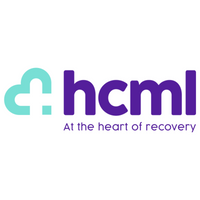Are you getting to the heart of your health data?
Employee health data is one of the most valuable yet underutilised resources in workplace management. When properly harnessed, it can transform how organisations approach wellbeing, reduce absence costs and create targeted interventions that deliver measurable returns on investment.
But for many UK employers, health data remains a frustrating patchwork of disconnected information that offers limited insight and even less actionable intelligence.
Often, the challenge lies not just in collecting data, but in making it work effectively for organisational improvement.
A fragmented health data landscape
The reality for a lot of organisations is that health data exists in silos across multiple systems, suppliers and departments. Sickness absence records sit in HR systems, healthcare plan utilisation data resides with benefit providers, and wellbeing programme engagement metrics exist on separate platforms entirely.
This fragmentation creates significant blind spots, which is a problem given the scale of the challenge being faced.
Recent CIPD research reveals that around 8.5 million working people in the UK believe their jobs are undermining their health, yet many employers struggle to gain a comprehensive view of their workforce's health profile due to disconnected services that duplicate efforts without delivering integrated insights.
The consequences extend beyond admin inefficiency. When organisations are unable to link data points together, they struggle to understand the true health picture of their workforce.
For instance, mental health support might be offered alongside musculoskeletal intervention programmes, but without connected data, employers cannot identify employees who might benefit from both services or understand how different interventions interact.
External benchmarking compounds these challenges. The ONS has suggested that there are flaws in national sickness and absence data which makes it difficult to truly say what is happening.
Unlike markets such as the US, where comprehensive health data insights are more readily available, UK employers often find reliable comparative data scarce.
This makes it difficult to assess whether absence rates, healthcare utilisation or wellbeing programme engagement levels are performing above, below or in line with sector norms.
The result of all this is decision-making based on incomplete information. Further CIPD research shows that only 53% of UK organisations have a standalone wellbeing strategy, with a third still taking a reactive approach rather than proactively managing health.
HR and reward professionals find themselves investing in health and wellbeing initiatives without clear evidence of what works, what doesn't, and where resources might deliver maximum impact.
The value of integrated health data
When health data systems work together effectively, the insights gained can become transformational. Integrated data enables organisations to move beyond generic, one-size-fits-all approaches to create targeted interventions that address specific demographic needs and organisational challenges.
Consider mental health support for younger employees – a growing concern across many sectors. With integrated data, employers can identify patterns in absence, healthcare utilisation and wellbeing programme engagement that reveal how different age groups experience and respond to mental health challenges.
We know from experience that the quicker an employee can access care and support, the better the results. This isn’t about finding a quick-fix solution, but taking the right steps to achieve long-lasting results.
This might include a workplace capability assessment, management action plans, wellbeing support programmes and access to treatment through physical, digital and telephonic services and a coordinated follow up pathway back to health.
The financial case for integrated health data is also compelling. Based on HCML’s experience working with organisations, those with comprehensive health data can achieve significant returns on targeted interventions – in some cases, screening programmes can save five to six times their initial investment.
However, achieving these returns requires knowing where to focus efforts – something which is only possible with comprehensive data integration.
Meanwhile, instead of responding to absence trends after they emerge, management can identify early warning signals and implement preventive measures.
This might involve recognising departments with increasing stress indicators before absence rates spike, or identifying employees who might benefit from early intervention based on healthcare utilisation patterns.
The demographic insights become particularly valuable as workforce composition evolves. Understanding how different groups engage with health and wellbeing offerings enables employers to continuously refine their strategies.
Perhaps most importantly, integrated data transforms the conversation with senior leadership from cost justification to value demonstration. When health initiatives can be directly linked to business outcomes such as reduced absence, improved productivity and enhanced retention, investment decisions become data-driven rather than assumption-based.
How to make health data work
Getting to such a stage often requires organisational change. The starting point involves honestly assessing current data capabilities and identifying gaps in integration and insight generation.
Harmonising different data sources under unified systems is a substantial undertaking, but one that can deliver big returns. This may require working with providers who can link disparate data sources and generate meaningful insights rather than simply collecting information.
The key question organisations must answer is: what problem are we trying to solve? Different objectives, be it informing wellbeing strategy, reducing absence, improving healthcare utilisation, demand different data approaches and analysis frameworks if they are to be met.
Regular communication about data insights becomes essential. Health data only creates value when it informs decision-making and drives action. This means translating complex information into accessible insights that enable HR teams, senior leadership and line managers to make informed choices about health and wellbeing investments.
Crucially, health data should be treated as an ongoing capability rather than a one-time project. Investment in systems and expertise enables continuous insight generation, regular strategy refinement and evidence-based programme evolution.
Business pressures and resource constraints make this challenging, but the alternative – continuing with fragmented, unreliable data – is like to be more costly.
Supplied by REBA Associate Member, HCML
HCML is a health and wellbeing provider, offering integrated and personalised healthcare solutions.








